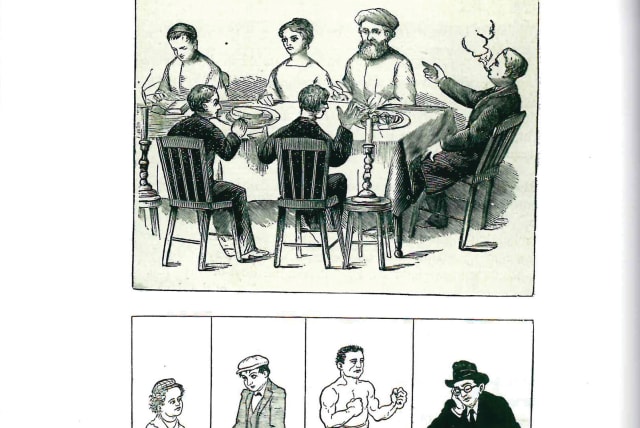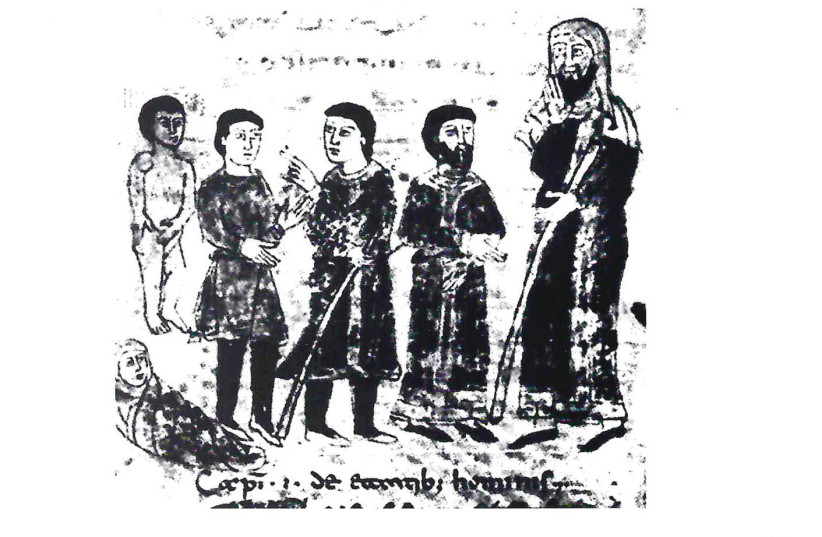Passover: A new reading of the Four Sons at the Seder

I hope that at the Seder this year, every parent will tell the story in a manner that fits his or her child so that the child may truly understand the meaning of the Exodus.
Anyone who examines the story of the Exodus is struck by the centrality of children to the story. In Exodus Chapter 1, Pharaoh tried to kill all of the Israelite boys. When that fails, he commands (v. 22): “Every boy that is born, you shall throw into the Nile...” In the next chapter, the infant Moses is placed in a basket in the Nile river by his mother in order to escape the decree, is saved by Pharaoh’s daughter and nursed by his mother. This infant grew up to become Moshe Rabbeinu, who was sent by God to redeem the Children of Israel.
Later on (Exodus 10:8-11), Pharaoh asks: “Who are the ones to go?” Moses replies: “We will all go, young and old,” and Pharaoh refuses: “No. You menfolk go.” They both understood that the future of the Jewish people hinges on the young.
It is therefore not surprising that the Sages placed the child at the center of the Seder. Children are required to drink four cups of wine, even though they are exempt from most mitzvot (Pesahim 108b-109a). Their parents give them parched corn and nuts in order that they stay awake and ask questions (ibid.).
A Mishnah in Pesahim states (10:4): “They pour him the second cup of wine and here the son asks his father. And if the son has no understanding, his father teaches him Mah Nishtanah... and according to his understanding his father teaches him...” In other words, after pouring the second cup, the son asks his father anything that he wants to ask about the Exodus, and his father replies according to the son’s ability to understand. The father only teaches the son Mah Nishtanah if he has no understanding, in order to arouse his curiosity.
How are the Four Sons portrayed?
The centrality of the child to the holiday of Passover reaches its climax in the midrash of the Four Sons recited at the Seder. The Sages juxtaposed four verses from Exodus and Deuteronomy that deal with educational aspects of the Exodus and explained in the Haggadah: “The Torah spoke of four sons: one who is wise, one who is wicked, one who is simple, and one who does not know how to ask.” In other words, each verse is referring to a different type of child.
This standard interpretation of the four sons is found in a wide range of Haggadot, including 31, which I included in The Schechter Haggadah. For example, in the Liberman Haggadah published in Chicago in 1879 (figure 1), the wise son is wearing a kippah, dressed in white like his parents, and engrossed in the Haggadah. The wicked son, who is smoking, leaning back in his chair and gesturing with his hand, represents the young immigrants who rebelled against their parents.
IN THE Eisenstein Haggadah illustrated by Lola (Leon David Israel) published in New York in 1920 (figure 2), the wise son is an observant Jew studying Talmud, the wicked son a boxer and so on.
In 1927, Otto Geismar (figure 3) managed to convey the four different types of sons in a very clever fashion by using simple black-and-white line drawings.
Finally, Siegmund Forst was a prolific illustrator of Haggadot. In his 1941 Haggadah (figure 4), under the wise son it says “a righteous man lives by his faith” (Habakuk 2:4). The wicked son is a revolutionary who wants to set the world on fire. The simple son is assimilated; he sips champagne and plays the guitar (with one hand), while the son who does not know how to ask watches the proceedings.
However, a different explanation of the four sons is hinted at in the illuminated Haggadot beginning in the 14 century. Thus, for example, in the Second Amsterdam Haggadah of 1712 (figure 5), the son who does not know how to ask is depicted as a young boy, the simple son as a young adolescent, the wicked son as a soldier with a sword in his hand, and the wise son as a grown, bearded man. Mira Friedman proved in the Journal of Jewish Art that these illustrations are borrowed from popular medieval illuminations of the six “Ages of Man” (see figure 6) and, if one ignores the first two ages, there is a striking resemblance between the two sets of illuminations.
In any case, these illuminations can lead us to another explanation of the four sons: They do not represent four types of children but rather four stages in the life of the same child. In other words, a young child aged two to three years old does not know how to ask (Exodus 13:8). The next stage is a “simple” child aged six or older who asks simple, unsophisticated questions (ibid., v. 14). The next stage is a teenager or young adult who rebels against his parents and his God, saying: “What is this service to you.” (Exodus 12: 26). The final stage is a mature man who has reached the age of wisdom, who asks out of a desire to understand (Deuteronomy 6:20).
This interpretation teaches us an important lesson. There is a tendency to read the text of the Haggadah quickly in order to get to the meal, but whoever does so has not fulfilled the obligation of “You shall tell your child on that day.” In order to fulfill that mitzvah, parents must explain the story of the Exodus to their children in a manner befitting their age and character, as we learn in the Mishnah cited above: “and according to his understanding, his father teaches him.”
I hope that at the Seder this year, every parent will tell the story in a manner that fits his or her child so that the child may truly understand the meaning of the Exodus.
Rabbi Prof. David Golinkin serves as the president of The Schechter Institutes Inc., in Jerusalem. All illustrations in this article are taken from The Schechter Haggadah by David Golinkin and Joshua Kulp, which can be purchased at Gefen or Amazon.
Jerusalem Post Store
`; document.getElementById("linkPremium").innerHTML = cont; var divWithLink = document.getElementById("premium-link"); if (divWithLink !== null && divWithLink !== 'undefined') { divWithLink.style.border = "solid 1px #cb0f3e"; divWithLink.style.textAlign = "center"; divWithLink.style.marginBottom = "15px"; divWithLink.style.marginTop = "15px"; divWithLink.style.width = "100%"; divWithLink.style.backgroundColor = "#122952"; divWithLink.style.color = "#ffffff"; divWithLink.style.lineHeight = "1.5"; } } (function (v, i) { });

